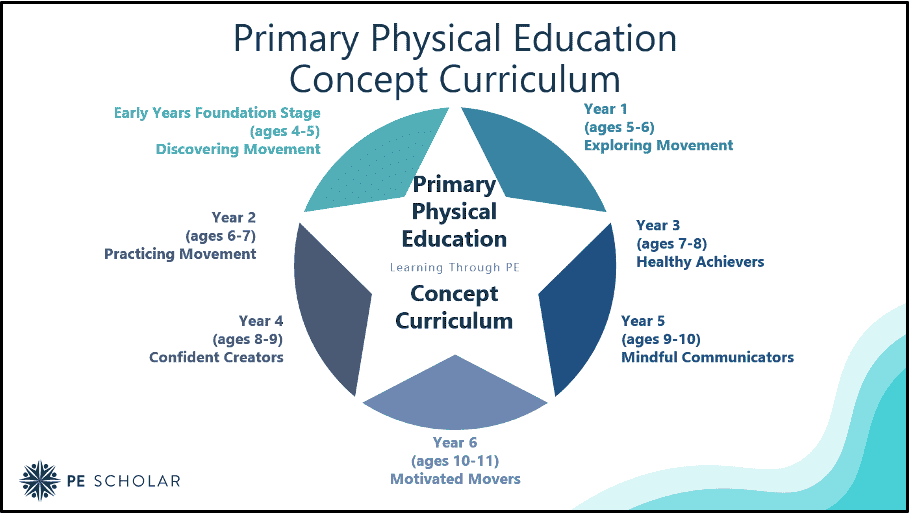
Introduction
In this blog, we’re going to delve into a Year 4 primary PE concept curriculum lesson that not only focuses on the importance of generating power in net and wall games, but also delivers a crucial health and well-being concept: social health. Our goal is to empower students to explore power in net and wall games while promoting social interaction and camaraderie.
The Importance of Flexible Curriculum Delivery
Before diving into the specifics of the lesson, let’s briefly discuss the importance of flexibility in curriculum delivery. The often used approach of sticking rigidly to a predefined curriculum can sometimes hinder students’ progress. It’s crucial to be responsive and let your students guide you. If they need more time to grasp a concept or skill, don’t hesitate to pause and revisit the lesson. This approach ensures that no child gets left behind and fosters a more inclusive and effective learning environment.

The suggested delivery provides opportunities to pause the scheme of work to consolidate and practice. Giving children the chance to practice learning in PE will develop those fundamental skills and increase the competence and confidence of those we teach.
Opportunities to Develop Physical Competence in the Lesson
- Motor Skills Development: The lesson involves activities that require students to use their hands to hit a ball. This helps in refining their fine motor skills, hand-eye coordination, and manual dexterity.
- Strength and Power: The central objective of the lesson is to teach students how to generate power in their shots. This involves using different muscle groups, particularly those in the arms and shoulders, to achieve forceful hits. As they practice, they are building strength in these muscle groups.
- Body Control and Balance: In some variations of the activity, students are encouraged to perform shots from different positions, such as crawling or press-up positions. This challenges their body control and balance, helping them develop core strength and stability.
- Spatial Awareness: By aiming for specific targets (goals or benches), students improve their spatial awareness. They learn how to judge distances accurately and apply the right amount of force to hit their target.
- Gross Motor Skills: While the primary focus is on hand movements, the lesson also involves overall body movements, such as positioning and footwork, as students navigate the playing area. This enhances their gross motor skills.
Lesson Overview
In this lesson, our primary focus is on social health within the context of net and wall games. We want students to learn how to add power to their shots and, in doing so, improve their ability to send objects effectively in these games. Additionally, we aim to help them understand the positive impact of physical activity on their social well-being.
Rather than spoon-feeding instructions, encourage students to explore and experiment with generating power in their shots. Give them the freedom to discover what works for them and what doesn’t. This approach promotes critical thinking and problem-solving skills, which are valuable both in PE and life in general.
Activity Overview
In one of the activities highlighted in the video, set up two cones or markers on either side, with students divided into teams. Their task is to hit a ball into the opposing team’s goal using their hands. You can vary the difficulty by adjusting the distance between cones and the players’ positions (e.g., crawling or press-up position). Emphasise the importance of bringing their hand further back for power and the follow-through.
Progressive Challenges
To challenge students further, consider variations such as striking a tennis ball against the wall or adding rules like not letting the ball go above waist height. These adaptations can keep the game interesting and encourage skill development.
Small-Sided Game
To conclude the lesson, organise a small-sided game (e.g. 3v3) where students aim to hit a bench or target placed in the opponent’s territory. This game encourages teamwork and strategy while honing their power-generating skills.
Conclusion
This Year 4 primary PE concept curriculum lesson offers an excellent opportunity for students to improve their skills in net and wall games while promoting social health. By giving them the freedom to explore and adapt, we empower them to take ownership of their learning. Remember that flexibility in curriculum delivery is key, and revisiting lessons when needed can bridge gaps and ensure all students progress at their own pace. Have fun delivering this engaging and educational lesson, and watch your students grow in confidence and competence.
Further curriculum ideas and resources
At PE Scholar we aim to provide high-quality materials and expert knowledge to make your teaching that bit easier. Below are some further resources and insights to support you with your PE curriculum.
Further lesson walkthroughs: Early Years, Year One, Year Two, Year Three, Year Five and Year Six
The Primary Concept Curriculum insight
PE curriculum design guest blog
Concept curriculum lesson templates
Concept curriculum non-performer worksheet
Mapping your PE Curriculum resource
Conceptual PE: a course for the future research publication
Purchase the Concept Curriculum – Primary and Secondary


Responses